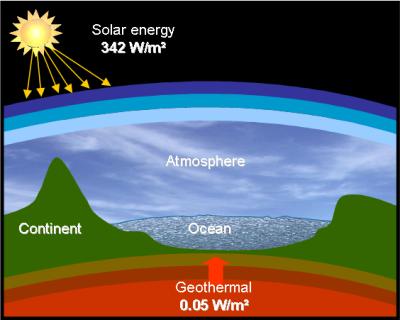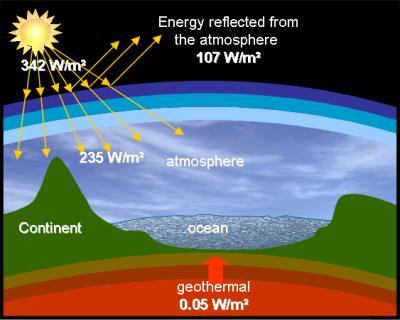Among the hundreds of billions of galaxies in the
universe we find the Milky Way, which contains itself hundreds of billions of
stars…including our sun.
As with all stars, the solar mass is such that the atoms in its centre are so
compressed that they are subject to nuclear fusion which produces enormous
quantities of energy (3,826×1026 [Wh]). This energy is radiated into space in the form of electro-magnetic
rays, such as light, for example.
A very small part of this radiated power reaches our
planet’s atmosphere at the rate of 342 [W/m²] (a value averaged out over the
year and related to the total ground surface area of the earth).
See course « Global warming part 1 ».

We can consult the article of Mme Marie-Antoinette Mélières of the
Laboratory of Glaciology and Environmental Geophysics (LGGE), on the CNRS site,
section Climate systems and climatic factors, greenhouse effects.
Of the 342 [W/m²] which reaches our planet, 30% is reflected back into space, and 235 [W/m²] contributes to the thermal balance of our planet.

These energy flows are averaged over the 365 days x 24 hours of the year in
relation to the total surface of the earth. They obviously vary according to
the time and the month, and to the latitude and meteorological conditions.

In fine weather conditions with maximum sunlight, the energy flow received by
the earth can exceed 1000 [W/m²].
It is therefore possible for a solar cell collector which is perfectly
positioned to receive this power input.
